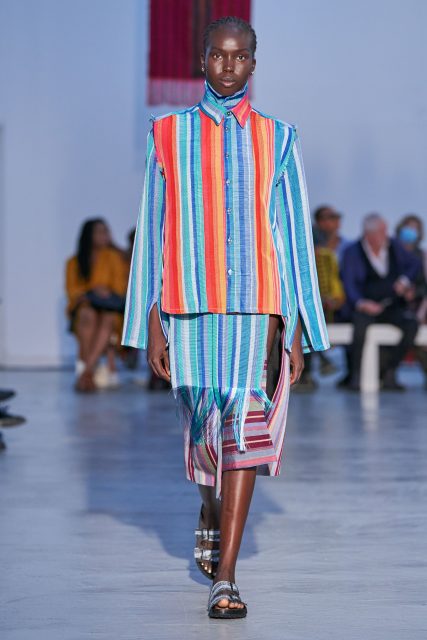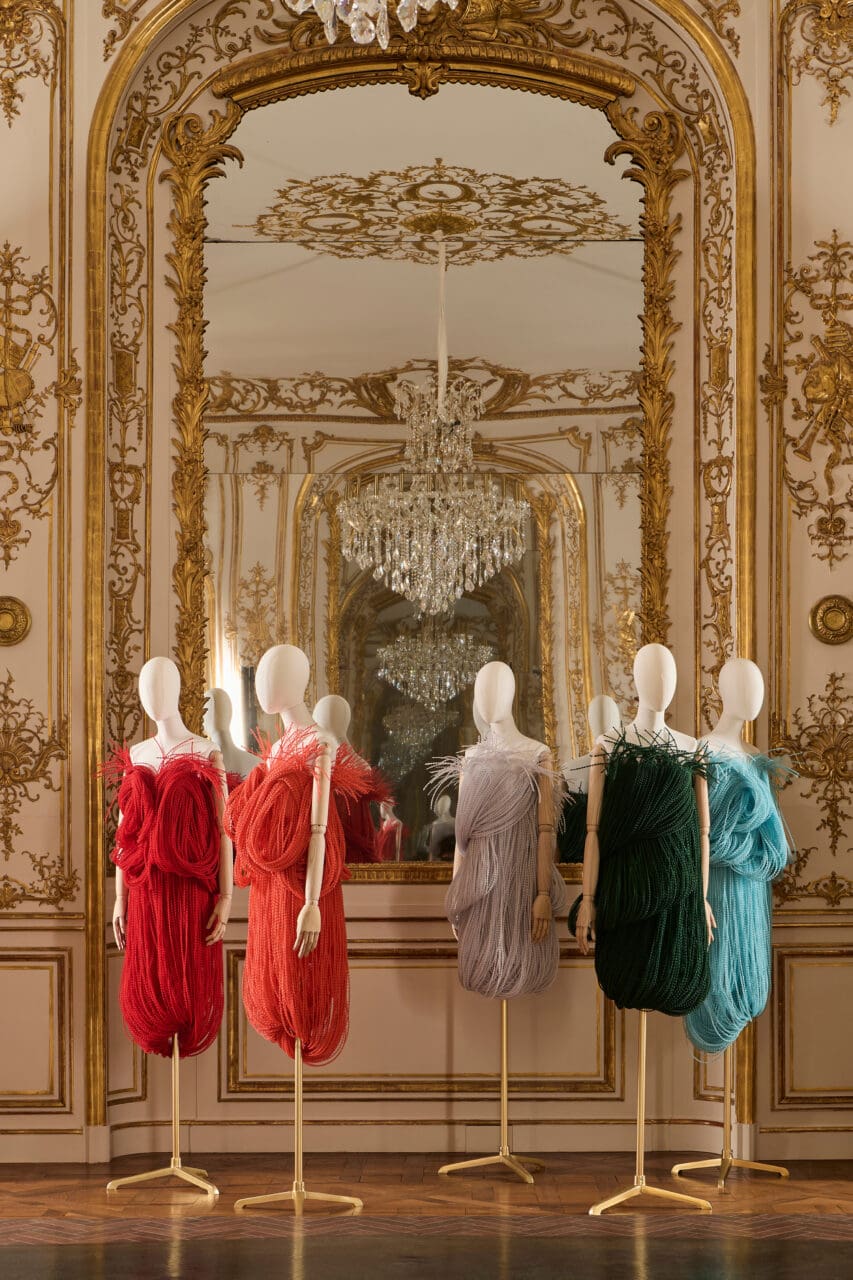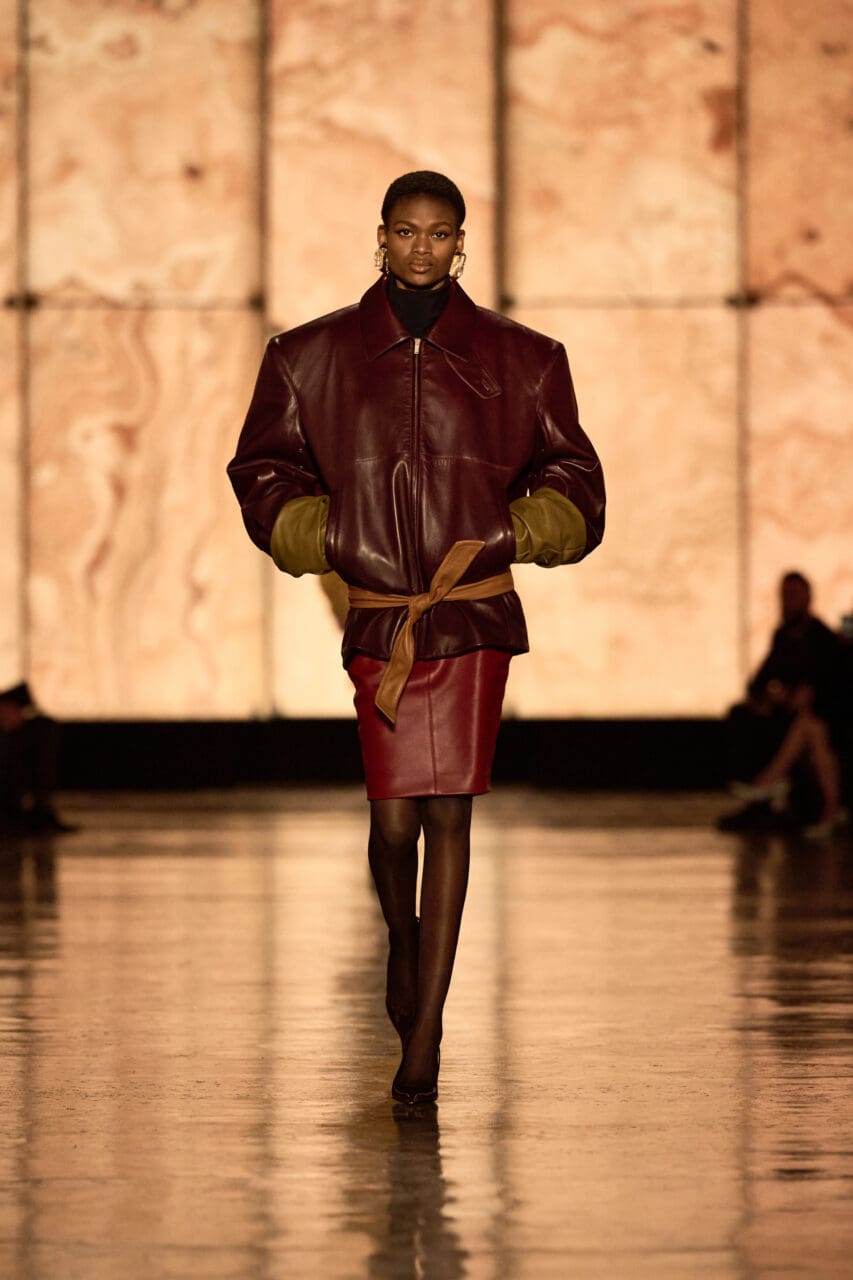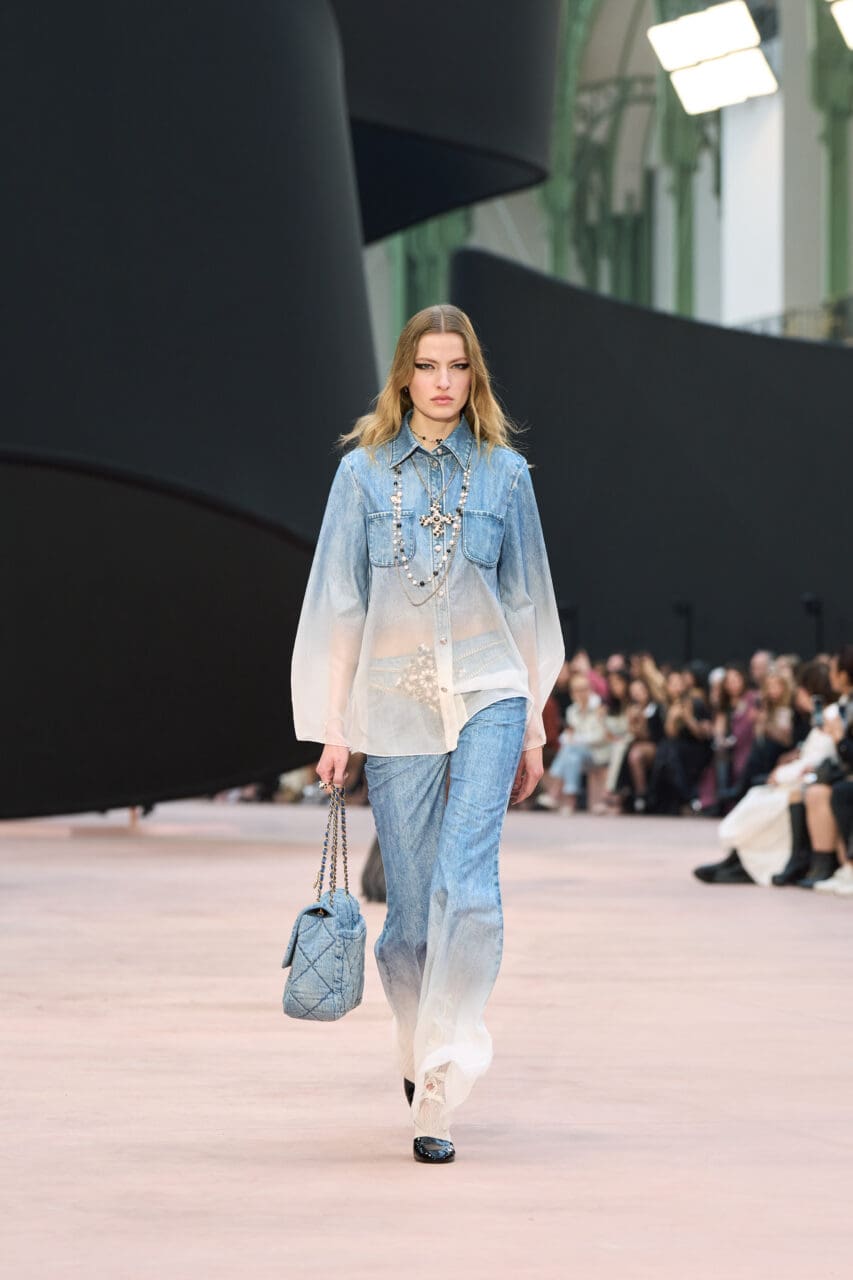No one ever said that the re-entry into an IRL Fashion Week was going to be easy. For spring 2022, Marine Serre decided to create a film, Ostal 24, which she made with past collaborators Sacha Barbin and Ryan Doubiago. There was a screening of it held in the Marais tonight, and that’s where the not easy part comes in; the crush from an understandably enthusiastic crowd eager to get in was not for the faint of heart. The previous day at Serre’s northern Paris atelier, however, was a stark contrast; all was calm. It was a chance to preview the collection, entitled Fichu pour Fichu, which Serre would unveil via video.
There were “popcorn” tops in all their Björkian splendor and beloved of any ’90s rave kid, repurposed into gorgeous billowing dresses and layered-up bobbly tees, perhaps to be worn with wide pants cut from an industrial-strength mix of wool and cotton. Vividly hued bath towels and linen tea towels were upcycled into coats, shirts, and apron-like skirts. Overdyed pink vintage denim and tees got deconstructed and then reconstructed panel by panel into jaunty vests, collaged dresses, and high-waist jeans.
What immediately registers about all this: how quickly and assuredly Serre continues to build on the strikingly original look she has created for her label. She seems to move at light speed, leaping ahead far beyond the timespan of a single season, especially on the drive to utilize sustainable fabric: With Fichu pour Fichu, 45% of the materials are regenerated, while another 45% are recycled, the most Serre has ever used. It’s done with a sense of nimble and concrete purpose that bigger nonindependent brands with a lot more resources to draw on could do with emulating.
Many of these pieces are showcased in Ostal 24’s 13-minute or so run time, a production haunting in its beauty, and from which seeps a gentle, quiet yearning sense of emotion. For Serre, live event or not, Ostal 24 is the real focus on telling the story of spring 2022. “It marks a moment, and it marks me,” Serre said. “Also, a film lasts longer than a show; it can live on the internet. If you are alone, or in the city, or in the countryside…you have access. A lot of people can see it. I really like that.”
The movie takes us through a day in the life of a community residing in a crumbling, fraying yet happy home situated on a bucolic rural landscape dotted with aging markers of industrialization—cars, tractors—which appear as both ghosts of some former life and also as objects to be treated with care and pride. (A car draped with a crochet blanket, like that you might place over Granny’s knees, is just one of the many striking visuals.)
Her choice of fabrications—the cottons and linens from the domestic sphere, or the jewelry that’s magicked up from cutlery chopped up and warped wittily into cuffs and earrings—speaks to the pride to be had in that which we use every day, a quieting of all of fashion’s hyperbole and din, and a reminder we need to find our own real and lasting relationship with what we wear and own and keep in every aspect of our material lives. It’s why this collection looks so right for the moment, in much the same way that the news about Kering’s ban on fur chimes with where we are right now: The projection of quote-unquote luxury as some illusion of exclusivity and elevation removed from quotidian life needs to remain back in the pre-COVID era.
Ostal 24 is broken into vignettes captioned with timestamps. We witness dawn yoga, communal cooking, the alteration of clothes tenderly by hand, and wild dancing solo or with loved ones, before closing with a ritualistic rites of passage scene as unnerving as it is entrancing in its strange sense of calm. (I won’t spoil it for you.) The glimpses we get of clothes are woven so seamlessly into the unfolding narrative that it becomes impossible to separate fashion from life, and life from fashion, which is, in essence, pure Serre.
“I keep being asked, ‘What’s next for fashion?’ ” she said at the preview. “But in real life, you see people making what they have last, sharing it with each other. That’s the approach I want to take with the garments, extending them into life. At some point,” she continued, laughing, “we might reach a point where we might not need any more garments. And if that’s the case, I know I would have the energy to do something else. So I think maybe that’s the path for a young, engaged brand to take. Right?”
Editor
Mark HolgateCredit
Lead Image: Courtesy of Marine Serre





